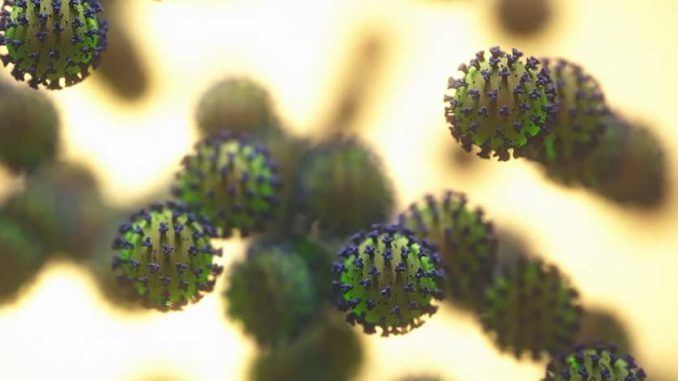
Views: 66
– Biology shows us that there are additional ways to reduce the risk of serious coronavirus infections, in addition to hand hygiene and keeping distance.
Courtesy ETH by Viola Vogel: We all know the importance of good hand hygiene and of keeping our distance if we want to protect ourselves and others from infection with the novel corona virus. These are targeted measures to curb the epidemic and relieve the burden on our health care system, giving it sufficient capacity to treat the most vulnerable people in our society.
However, there are additional measures that we can take to reduce the risk of infection and the severity of the disease: Paying conscious attention to taking care of our throat and everything that supports the self-cleaning powers of the respiratory tract make a difference. As the situation develops, this will become increasingly important. The more the virus spreads in our environment, the harder it will become to avoid coming into contact with it. It is thus increasingly important to ensure that as few of the virus particles as possible reach our lungs and cause inflammation.
Our body not only fights viruses with specific antibodies, but also deploys an arsenal of other, non-specific defence mechanisms when it comes into contact with pathogens. Biology shows us how we can reinforce these endogenous safeguards to our benefit: When the coronavirus travels through our body, what happens on its journey before it attacks our cells? And how does the virus actually get into our lungs?
Conveyor belt cleans the respiratory tract

What we know so far is that the coronavirus spreads mainly via droplets. This happens when an infected person exhales viruses embedded in tiny water droplets and another person close by inhales them. The virus-laden droplets settle on the mucous membranes in the nose or throat, or on the walls of the trachea and bronchial tubes.
For the virus to multiply, it must infect a cell closeby – which takes time. During this process, the virus replicates its genetic information, produces a large amount of new virus particles and causes the host cell to burst, releasing many virus particles. Over several replication cycles, the virus spreads further into the respiratory tract until reaching the last branches of the lungs.
“We are not helpless against the coronavirus.” Viola Vogel

Importantly though, the respiratory tract is equipped with extremely effective self-cleaning mechanisms: its walls consist of cells that expose tiny cilia, which are covered by a thin layer of mucus. In analogy to a conveyor belt, the cilia all move in synchrony in a circular pattern to transport the mucus slowly from the bronchial tubes up into the throat. In this process, particles deposited on the mucus are removed from the respiratory tract. However, when the mucus becomes too viscous or the mucus layer gets too thick, this cell-driven conveyor belt begins to stall.
In the lungs, a final, non-specific defence mechanism against viruses is provided by scavenger cells in the immune system, which are found in the alveoli. These cells are responsible for keeping the lungs clean; in doing so, they don’t distinguish between pathogens and pollutants from the environment. But their capacity to gobble up particles is limited. The more time they spend removing fine dust and other particles from the alveoli, the less efficient they are at reducing the number of viruses.
Measures to reduce the number of viruses
It is important to realise that we do not necessarily become infected as soon as we inhale a virus. The probability of infection increases with the number of viruses, which means that the dose of viruses is critical. Breathing only through the nose already reduces the number of viruses that enter the mouth region. Once they have entered into our body, at least some of the viruses that get stuck on the lining of the throat might get removed when using antiviral mouthwashes, of which a wide variety is available.
Common home remedies that we typically use to fight early symptoms of a flu infection, such as gargling and drinking hot ginger tea, are fully justified too. Regular inhalation of water vapour further helps to keep the mucus layer in our respiratory tract sufficiently fluid, which in turn helps the conveyor belt to clean out particles more efficiently. Finally, to allow the scavenger cells in the alveoli to fight off viruses as efficiently as possible, it helps to avoid exposure to other environmental pollutants such as particulate matter, and to give up on smoking.
Taking small, additional actions can help to further reduce the number of viruses that enter our lungs, and you can help at several levels: from the nose, throat and bronchial tubes all the way to the alveoli. And it is this number of viruses, again, that determines whether a severe lung infection might occur or not. We are not helpless against the coronavirus. Each and every one of us can do our bit to keep it in check.
Related article: Behind the scenes, scientists prep for COVID-19 vaccine test